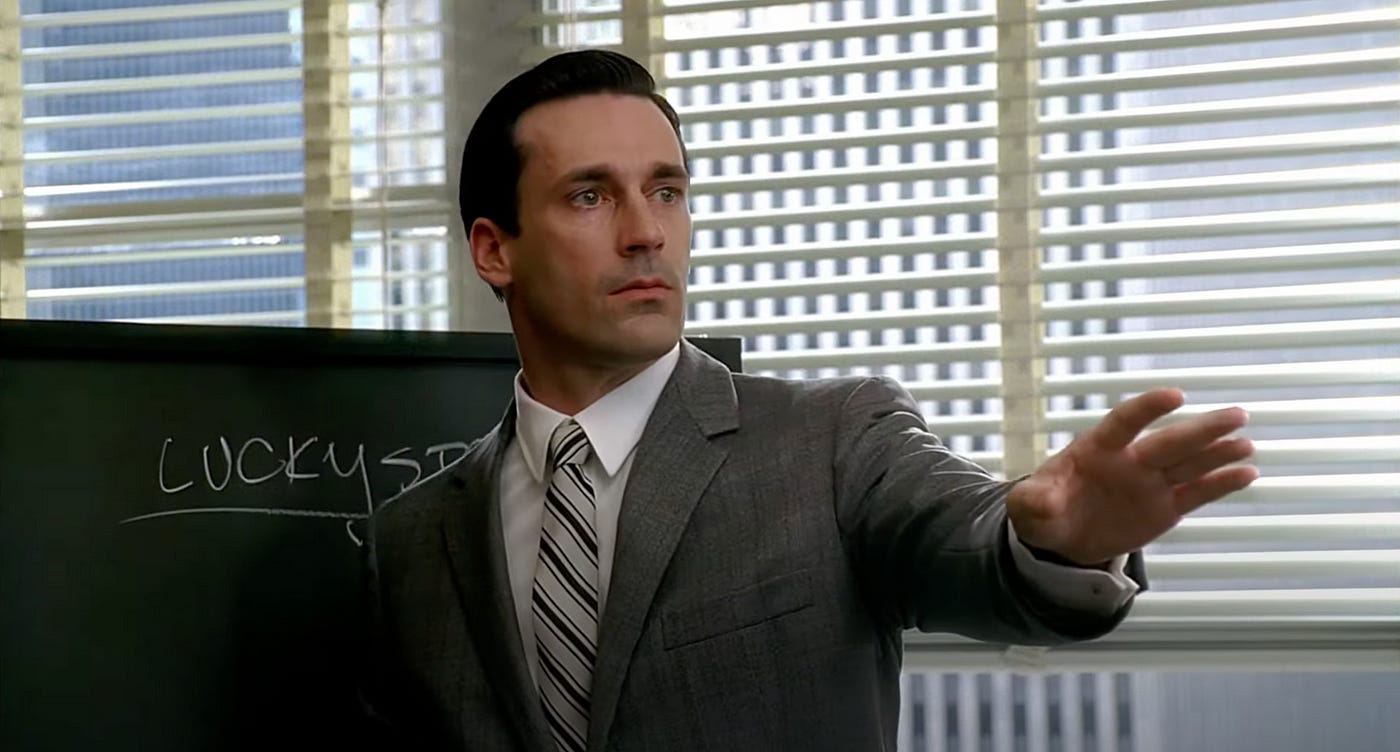I’m currently on my third career, and my current one has by far the most linear trajectory. I started out as a senior analyst, I was promoted into manager roles and associate director roles. I now occupy the hallowed ground of middle management as a VP, and I hope to eventually move onto senior VP, then maybe executive VP, then maybe an MD or C-suite somewhere.

The assumption (and the current setup at most companies) is that one progresses through these consecutively, with prescribed roles and responsibilities and salary bands for each one. Publicis Groupe is no unicorn here - just about every desk job has a similar career track. We take it for granted that career progression simply is this way, but are we thinking about it correctly?
They’re How Old?
At a pivotal moment in my career at Digitas I was put onto a business that was, to put it nicely, a dumpster fire. Through sheer coincidence (I was told), we had the entire analytics department of the main client at one of our offices “taking other opportunities.” Would I like to try to help right the ship? (I was being “asked” by the department head and this client was keeping the lights on, so the answer was predetermined.)
I began flying a few times a month to this office to figure out what was going on and to begin the hiring process of a new department head and a new analyst while learning a new client (and getting over my paralyzing fear of flying at the time.) It was one of those stretch assignments that you look back on with fondness even if it made you lose sleep when you were going through it.
One of the curious things I found as I got the lay of the land was an associate director in their late 30s. According to our career track, the time in-role for this individual should have put them at least in the VP realm, if not SVP.
In my ignorance, I simply assumed they were bad at their job, but not bad enough to fire and just remained a relic of the organization, like Milton and his red stapler.
Matt You Ignorant Slut
This person was not bad at their job - in fact, they were quite good at executing what was needed at the associate director level. They simply did not have an interest in moving towards a more managerial role.
At the time, that seemed crazy to me. It was the only way to keep progressing in a career! If you’re not trying to be the CEO, what are you even doing? You have to overachieve or you’re falling short!
With hindsight and maturity, it is now apparent that while this person was an outlier, they were also likely ahead of their time. Corporations continue to subscribe to a linear career path, with managerial duties a prerequisite for entrance into middle management and beyond. But that’s not necessarily the right track for everyone. It’s how you get a great salesman into a managerial position where they really have no business taking up space - you lose the sales and worsen your efficiency with a manager who doesn’t really want to manage.
How Do I Know if I’d Like Management?
There’s a lot to be said about trying something to see if you like it, but if you’re like my kids (straight up refuse) or a junior employee (haven’t had the opportunity) then you’re not going to be able to try it out before you buy into it.
When I’m lucky enough to promote someone into a people manager role, I stress that the skillsets are very different and we don’t do a good job preparing them for the role. I’ve laid out what I think are the key pieces of being a good manager before in this newsletter: consistent feedback, empathy, and delegation being up there. But there is a way to test some of these out as a junior employee by utilizing an energy audit.
An energy audit is simply reflecting on your day and writing down what gave you energy and motivation as opposed to what drained it. Do that for a week or so and see if the things that drove you inhabit a more managerial category or an individual contributor category. If you find everything falling into the IC category, that might be telling you something.
But is it Realistic to Remain an IC and Still Progress?
It’s a good question, and it’s more up to your company and their career structure than anything else. Way back in 2010, Cathy Benko in the Harvard Business Review floated the idea of a corporate lattice to replace the corporate ladder. In my small sample size of a handful of agencies in the holdco model, I have not seen this particular model take off, but that’s not to say all hope is lost.
Step one - as with any career progression expectations - is to speak with your direct manager. You’ll be doing yourself, your team, and your employer a huge favor simply by voicing your concerns about people management and your desire to continue to grow in a different kind of career path. If your company values you as an employee, they should listen and help you find a way forward. If you’re a trailblazer in this, hold some sense of satisfaction that you very well may be paving a path forward for folks behind you who feel the same way.
If you’re being offered a managerial role you don’t think you’re meant for, there are ways to approach that, too. Keep in mind the focus of the company will be your continued contribution, which is what got you into promotion-land in the first place. All business cases for why you should continue to grow on an IC track vs. a management track should contain the reason why it’s best for the company primarily and you secondarily.
How realistic this is all depends on how progressive your company is and how willing they are to think outside of the norm when it comes to career progression. The more employees who speak up about it, the more awareness it will bring and the more companies will be willing to consider it.
Grab Bag Sections
WTF MTA: This week’s WTF MTA actually heads about 200 miles south to our storied nation’s capital, where senators challenge Teamsters to fights and congressional reps use campaign dollars for OnlyFans. WMATA is a system that, despite being younger than most boomers, has a safety record that belies modern technological train enhancements. Despite that, I still use it when have client meetings down there because luckily the offices I need to get to are right off the Red Line and the Union Station connection is easy. [Editor’s Note: The Dunkin on the ground floor of Union Station doesn’t take the rewards app as payment - it’s cash or credit only. How is this possible in 2023? Is there a loophole in the franchise contracts? I was - and still am - flabbergasted at this.]
One thing about this system I don’t like is the exit fare. Most systems I use have a flat fare to swipe into the system to get where you need to be. Not in DC - you need to swipe out to exit the system. That means unless you’ve memorized the zones and their pricing (remember DC taxi zones? What is the capital’s obsession with that system?), you don’t know what you’re paying until you leave. Also, the havoc it wreaks on out-of-towners is high if my anecdotal views of confused tourists trying to get out of the system is any indication. WMATA - please encourage a single-swipe lifestyle.
Album of the Week: Turning our gaze northwards now, Toronto is the home of Jessie Reyez, a singer-songwriter whose second studio album Yessie is damn near perfect.
Eleven songs of angst, heartache, and anger make up an album with only one skippable song (“Tito’s”). Frequent Reyez collaborator 6lack is on “Forever” which is behind only “Mutual Friend” and “Still C U” as the best tracks on the album. No Eminem feature on this one, though. Still a killer album.
Quote of the Week: “The flag is a symbol we attach our emotions to, but it isn’t the emotion itself and it isn’t the thing we really care about. Sometimes we don’t realize what we really care about, because we get so distracted by the symbols.” - Ken Kesey
See you next week!










